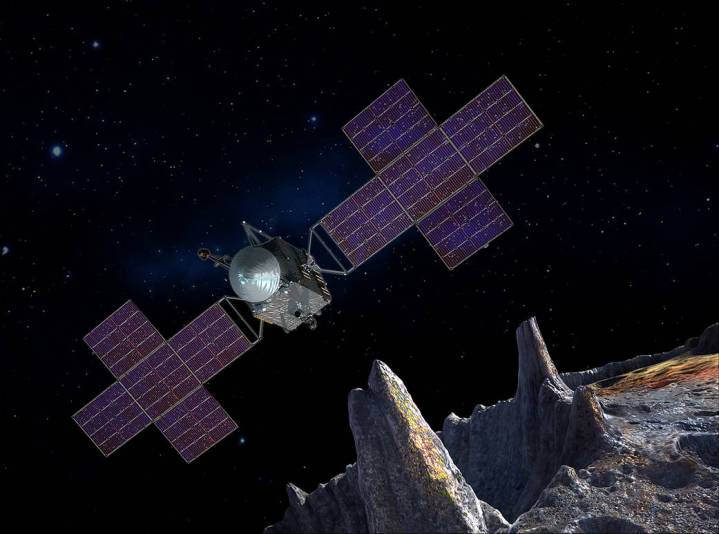
NASA has contracted SpaceX to carry out the launch for its upcoming Psyche mission to a strange metal asteroid in our solar system. The launch will use one of SpaceX’s Falcon Heavy rockets, for a cost of $117 million.
“The Psyche mission will journey to a unique metal-rich asteroid, also named Psyche, which orbits the Sun between Mars and Jupiter,” NASA explained in a statement. “The asteroid is considered unique, as it appears to largely be made of the exposed nickel-iron core of an early planet — one of the building blocks of our solar system.” Astronomers believe that studying this unusual asteroid could help us to understand how planets develop, including planets like Earth.
“Deep within rocky, terrestrial planets, including Earth, scientists infer the presence of metallic cores, but these lie unreachably far below the planet’s rocky mantles and crusts,” NASA said. “Because we cannot see or measure Earth’s core directly, the mission to Psyche offers a unique window into the violent history of collisions and accretion that created terrestrial planets.”
The Psyche craft will have five solar array panels to provide additional power for the propulsion system, in addition to electric power, which will allow the craft to navigate to the asteroid and enter orbit around it. The craft is currently in the design and fabrication phase, in which the design is finalized and procedures for the scientific experiments performed by the craft are developed. Early next year, final assembly and testing of the craft will begin.
As well as the Psyche spacecraft, the Falcon Heavy rocket will also carry two secondary payloads. The first, the Escape and Plasma Acceleration and Dynamics Explorers (EscaPADE) will study the atmosphere of Mars, particularly how the solar winds affect the atmosphere and the processes that cause the atmosphere to be lost into space. The second is Janus, a small satellite which will study binary asteroids — pairs of asteroids which orbit around each other and which are believed to be some of the earliest objects formed in our solar system.
The Psyche mission is set to launch in July 2022, from the Launch Complex 39A at Cape Canaveral Air Force Station in Florida.
Editors' Recommendations
- Watch SpaceX fire Starship’s Raptor engines ahead of 4th test flight
- How to watch final moments of NASA’s first asteroid sample return mission
- NASA’s IXPE mission gets an X-ray view of the famous Crab Nebula
- NASA’s Psyche spacecraft almost ready for launch to weird metal asteroid
- FAA review of SpaceX Starship launch delayed by another month




